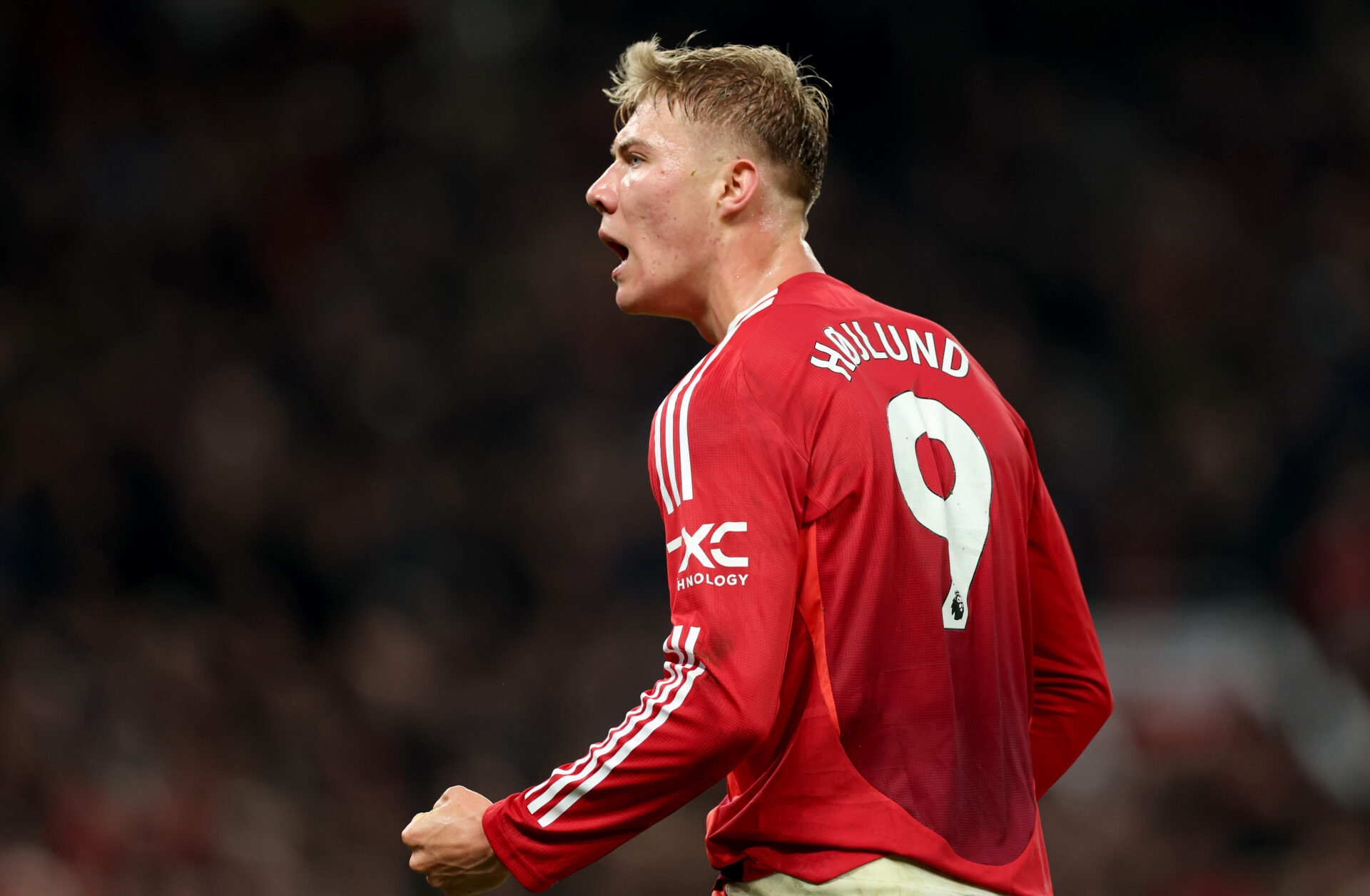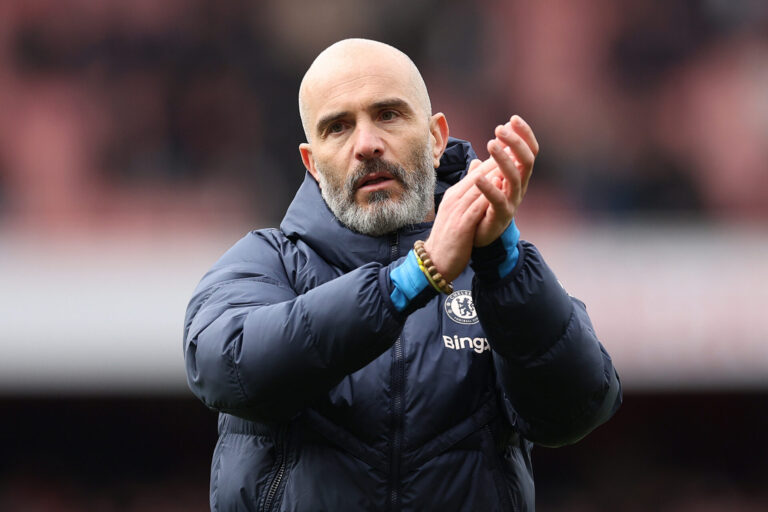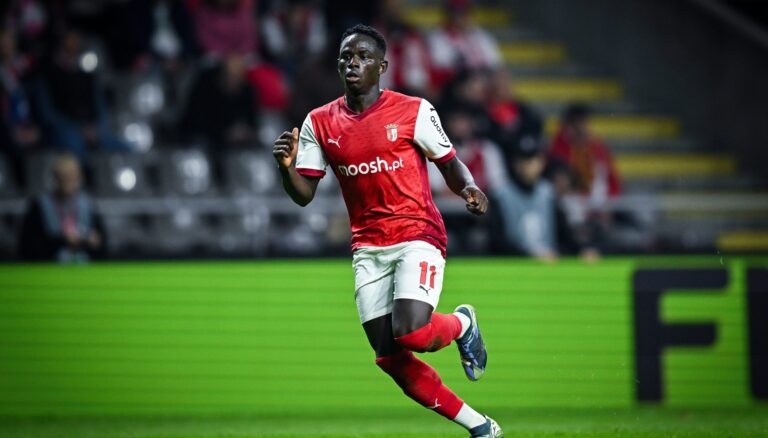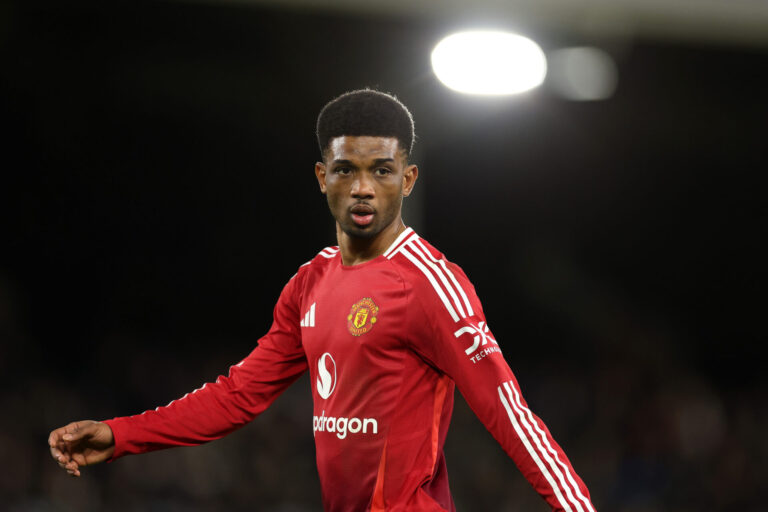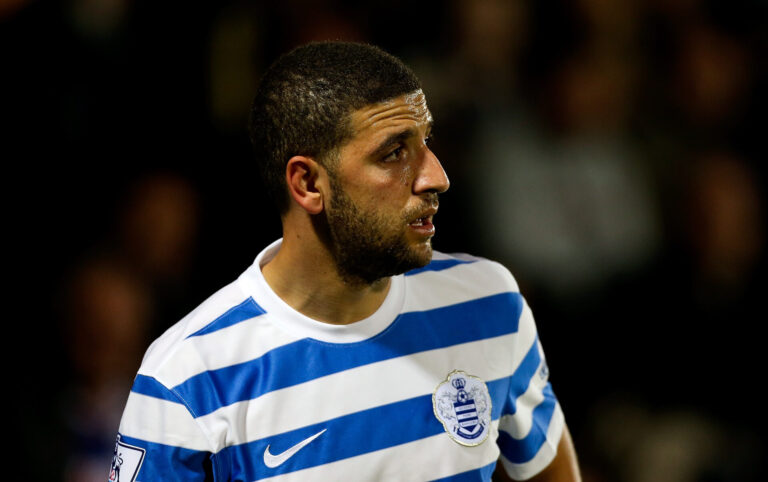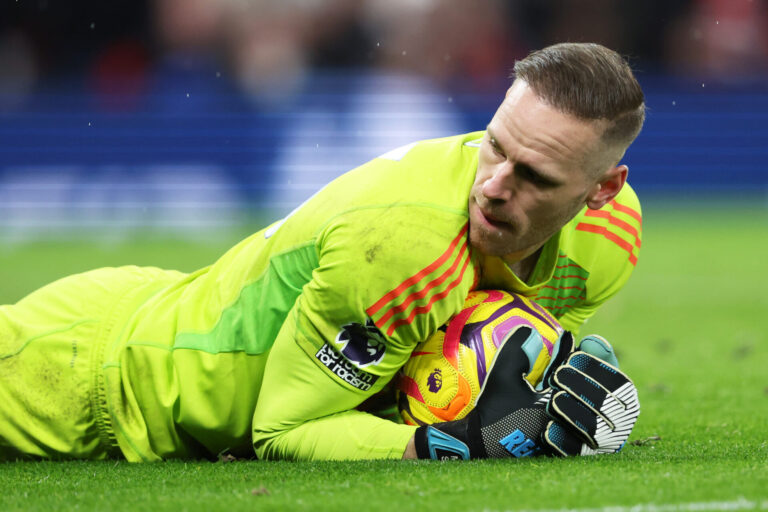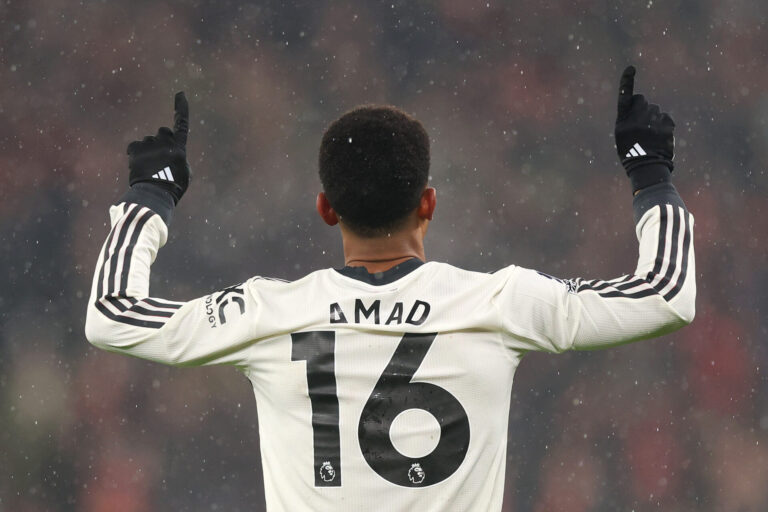Rasmus Hojlund, the next Manchester United scapegoat?
Rasmus Hojlund supported Manchester United since he was a boy, and the boy he was when he was watching the team win everything there was to win would not have been too familiar with a fan base that treats their players quite as harshly as this one. It’s been a common theme in recent weeks in regards to Ruben Amorim’s conversations about the center forward position at Manchester United. Joshua Zirkzee and Rasmus Hojlund are talented, but the team isn’t using them best on and off the ball.
“A striker needs a very good team to deliver very good balls for him and we are not helping our strikers at the moment.”
Now within that, there is a rawness from Hojlund. A clear lack of confidence, which absolutely results in a fair few loose touches within the game. There is an insistence on tussling with the defender, which, as a young striker learning his trade, he needs to become knowledgeable of and try to work on creating separation in his game going forward. But there is one simply undeniable metric staring everyone right in the face when speaking about Rasmus Hojlund at Manchester United: he is playing in the single worst team in the Premier League when it comes to playing as a center-forward.
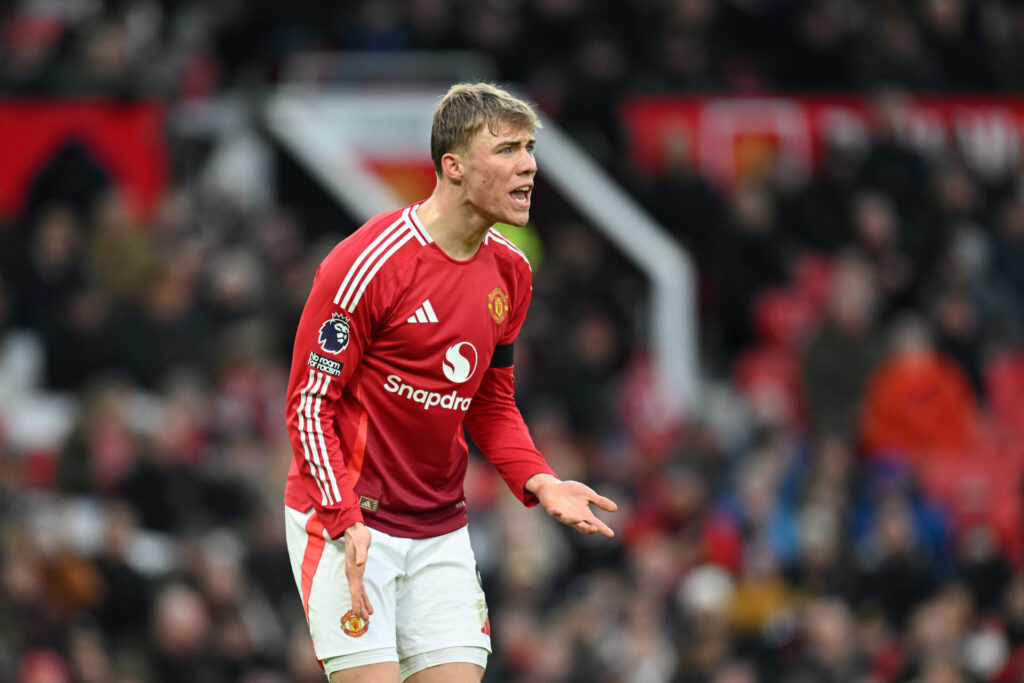
United’s profiling of Hojlund:
Leicester profiled Patson Daka better than Manchester United profiled Rasmus Hojlund last night, and this is not a Ruben Amorim problem; it’s simply a result of the players not being capable enough of maintaining the demands of the system at the moment and moving the ball too slowly from A to B on a regular basis, particularly around the backline. Amorim’s three center-back alliance at Sporting aimed to move the ball quickly amongst each other in a metronome-like fashion and try to move the opposition block side to side in order to create little gaps in between and try to break the lines into the forward players. Leicester set up in that narrow block last night, with Ruud Van Nistelrooy identifying that it forced United wide and eventually long more often than not, and the ball was not shuffled intensely enough amongst the backline to create them central gaps, which of course caused them to pass backwards and the ball to go back to Andre Onana, which eventually went long.
Why are we asking Rasmus Hojlund to be a target man when he isn’t? Julian Alvarez wasn’t asked to be a target man for Manchester City last season. Diogo Jota isn’t asked to be a target man for Liverpool when he’s fit. The difference in those two players is they played in a system their teammates were completely capable of carrying out and comfortable in. They had extended periods of possession during games, which again resulted in box-crashing moments and opportunities to create your own chances. Hojlund, despite the debate online, has repeatedly demonstrated his ability to do so while wearing a United shirt.
You don’t have the conversion rate Rasmus Hojlund had last season by having “poor movement.” You don’t become the youngest striker to ever score six goals in six consecutive games in the Premier League by being a poor footballer. The toxic Manchester United fans need a scapegoat. They seek a single, or occasionally multiple, footballer to assign all the blame for the team’s struggles. “Take insert name out of this football team and we will challenge for the title.” “Sack Ole Gunnar Solskjaer and get a tactical manager in like Erik ten Hag and we challenge;” “Sack Erik because he has no tactics and bring in a coach who knows what he’s doing and won’t veer from his system like Ruben Amorim.”
What’s the discourse like now regarding that same thing they all prayed for Ruben to continue to do when he came to the club? “How dare he stick to this system that clearly isn’t working.”
Twitter is full of attention-starved fake fans with blue ticks looking to generate money through controversy. That’s not to say Rasmus Hojlund can’t be criticized; of course he can. He needs to improve his confidence. He needs to create separation. He needs to work on that touch being more consistent on a regular basis. But he needs support to be able to do that, not criticism that goes beyond constructive. How do you think it feels when a player who is clearly immensely low on confidence fails to trap a ball due to that low confidence and goes online to see numerous fans going above and beyond to make fun of him on Twitter, or even like Joshua Zirkzee being booed by the fans? When did the United fan base become anything but United?
What do the stats say?
For a more statistical outlook on it, last season Rasmus Hojlund received the fewest passes into him in the entire Premier League for a striker, a statistic that many pointed towards being a fault of Hojlund, despite being the top scorer in the Champions League at the exact same time that statistic came to light. How does that happen? A player who apparently has movement that’s poor enough to force his teammates to have no option other than to pass to anyone else but him scores five goals in six games in Europe’s most competitive competition. An unusual turn of events, wouldn’t you say?
There was a period last season in which Alejandro Garnacho completed just five passes to Rasmus Hojlund in seven hours of football. Antony completed 2 passes to Hojlund in five and a half hours of football. United’s wingers now and last season are shoot first, think later, not create first and shoot later, which quite clearly has a huge impact on your center forward, who is literally waiting in the box, always in between the posts and the two center forwards, begging for those chances to come. Garnacho was amongst the players who had the most shots per game in the league this season, as was Antony.
Statistically, again, as per Sky Sports, when Hojlund collects the ball and receives a pass in wide areas, which he is good at, channel running, it usually results in a chance. United don’t service Hojlund out wide very much, with the vast majority, again based off stats, of the passes he’s received being straight passes from deep positions on the pitch. This is a clear example of a team knowing Rasmus Hojlund’s strengths but either not being good enough to play to them or choosing to ignore them.
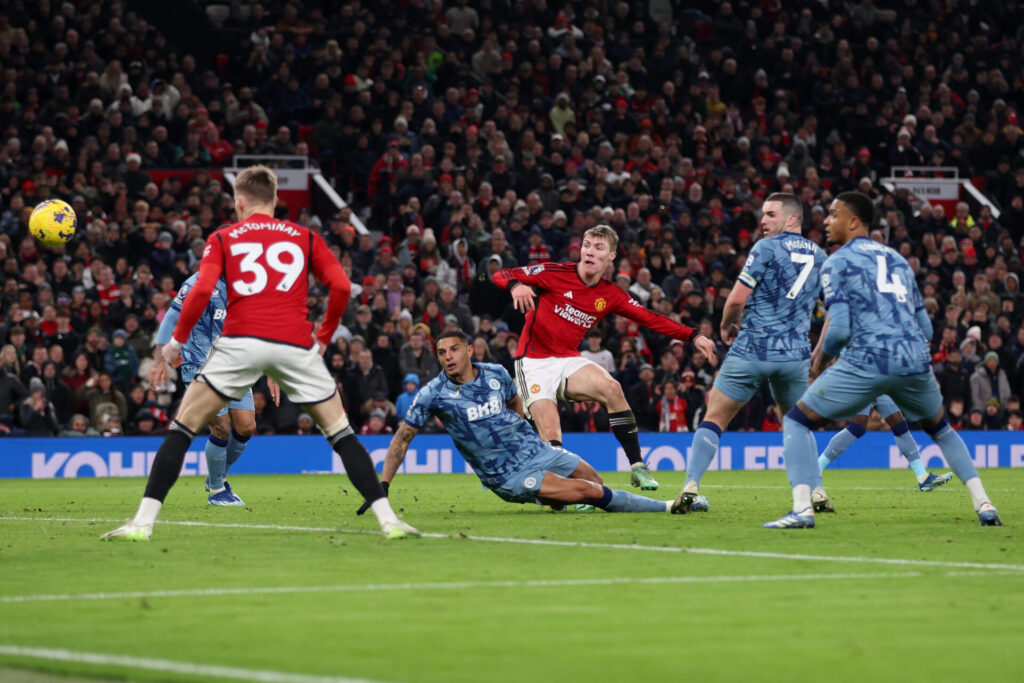
In games like the Aston Villa game, where Hojlund’s six-goal streak started, he did not misplace one pass, being the only player to successfully complete 100% of his passes in the game, topping that off with an expert finish beyond Emi Martinez to score his first Premier League goal. A week later he misplaced two, had the fewest amount of touches on the pitch in a tough game for United against Spurs, but had that one-shot bang goal mentality to give United the lead early on fresh off the back of his first goal against Villa. Confidence is key.
Hojlund is making those runs. According to the Second Spectrum data, he averages 24.4 attacking runs per 90 minutes in the Premier League this season. That puts him among the competition’s top strikers and is actually slightly more than Haaland is registering- Stat from Sky Sports News, 23-24 campaign.
A week later, 100% pass completion, a goal from true center-forward movement, a huge chance created for Marcus Rashford on the break, and an overall expert center-forward performance. Rasmus Hojlund, correctly profiled and full of confidence, performs admirably.
In two of the next three games, Hojlund scored goals created all by himself. In fact, the West Ham goal where he cut inside onto his right foot and smashed it beyond the keeper became somewhat of a trademark for him last season, scoring similar goals against Brighton and Newcastle. The first Luton goal, similar to the Galatasaray goal, burst beyond the backline and showing his composure to give United yet another lead, again showcased Hojlund’s ability to fashion chances for himself.
This was a six-game period where United profiled Rasmus correctly. Probably the only six-game period in which they have profiled him correctly in his entire time at the club. You don’t score 16 goals in a debut season for a football club the size of Manchester United if you’re a striker with no talent, especially in a team that barely ever played to your true strengths.
If you watch Manchester United games and just focus on Hojlund, without being drawn into the toxicity the online fanbase tries to create when he fails to trap a pass in the 88th minute after chasing shadows all game and making 35 consecutive runs that aren’t found by his teammates, you’ll see just that. The team consistently overlooks box movement. Amad and Garnacho, as brilliant as they are, do not create optimal opportunities for a striker, and the current situation with the wing-backs and their lack of byline runs to create either box-crashing opportunities or pull backs to the edge provides a very difficult environment for a centre forward to thrive in.
Ruben Amorim referenced this last night. Lisandro Martinez spoke about it before his injury. It’s a common belief in the dressing room that the team needs to profile their strikers better. Any striker on the planet would struggle to score consistently in this system, particularly within the Premier League, as Hojlund, again, is the third top goal scorer in the Europa League with the joint best minutes-per-goal ratio out of any player in the entire competition and also the most goals per 90 minutes.
He is a good striker, who definitely needs fine-tuning, but if moulded in the right environment can easily become one of the deadliest strikers in European football.


